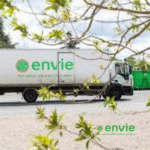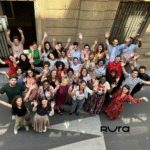Digital Association: Boosting Development in 2025
The term "digital association" refers to the use of digital tools to manage, develop, and promote nonprofit projects. This includes the use of communication platforms, membership management systems, online fundraising solutions, and much more. By adopting these digital tools, associations can improve their efficiency, reach a wider audience, and facilitate collaboration.
The benefits of a digital association
Optimization of internal management
Digital tools like Google Workspace Or Trello allow associations to centralize project management, track progress, plan tasks and improve internal communication.
Donation Management and Fundraising
Digital technology makes it easier to donate online through platforms like HelloAsso Or Leetchi, allowing associations to quickly receive contributions, increase transparency and strengthen donor confidence.
Communication and visibility
Digital tools offer multiple ways to communicate with members and the public. Social media, the association's website, and newsletters allow you to share information, promote events, and raise awareness of the association's causes.
Accessibility and broadening the audience
In the digital age, nonprofits can reach a global audience, which is especially important for those seeking to raise awareness about specific causes internationally. Additionally, making information available online ensures greater accessibility for everyone, regardless of location.
How to become an effective digital association
Implementation of collaborative tools
To maximize efficiency, it is essential to adopt collaborative tools. Slack, Google Meet Or Microsoft Teams help teams coordinate remotely and work efficiently, regardless of their location.
Train members
One of the main challenges for a digital association is training its members. Raising awareness about the use of digital tools is essential. This can be done through training sessions or online tutorials.
Choosing the Right Tool Stack
Digital associations must manage their budgets carefully, especially when it comes to funding digital tools. Fortunately, many services, such as Google for Nonprofits, Microsoft for Nonprofits, Slack Or Canvas, offer free or reduced-price solutions for associations.
Conclusion
Transitioning to a digital nonprofit is a strategic step for any organization seeking to increase its impact, improve its internal management, and expand its audience. Through digital tools, nonprofits can maximize their efficiency, improve their visibility, and optimize their fundraising processes. Proper preparation and team training are essential to fully leverage these resources. A digital nonprofit is therefore a crucial lever for organizations adapting to contemporary challenges.



